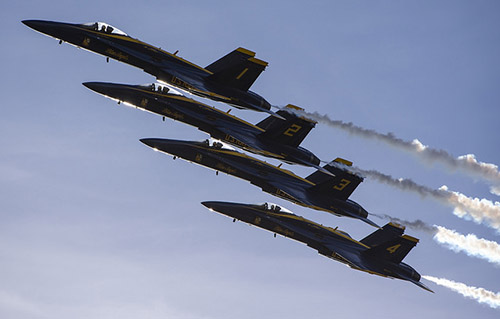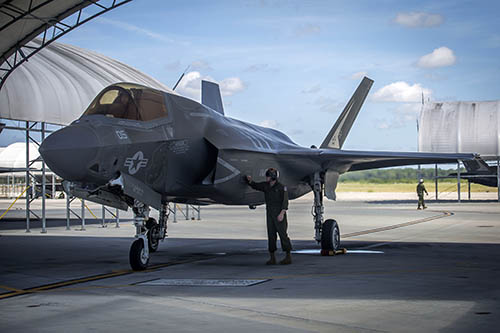The Marine Corps has grounded the entire fleet Hornet not operational following the umpteenth accident, which occurred last Tuesday. The stand-down will cover all the Marine Air Wings not lined up in battle on the globe.
The last F-18C of the Marines crashed a few hours ago, near the Naval Air Station Fallon, Nevada. The pilot, assigned to the Naval Aviation Warfighting Development Center, managed to launch himself, with only minor injuries. It is however the second incident in a week to involve the Hornet of the Marine Fighter Attack Squadron 232 which is based in Miramar, California.
The 28 last July, an F-18C crashed near Twentynine Palms, California, during a night training mission. The pilot died. Last June, two more Super Hornet, this time gods Blue angels, were destroyed during a training mission off the coast of North Carolina. Since last May, the US air force has lost a total of five Hornet and two pilots.
The defense cuts are having devastating effects on American aviation. In the 1991, the US air force was 134 hunting squadrons. Today I am 55. The average age of a US military aircraft is 27 years. What is happening to the Marine Corps fleet is a classic example of the real situation of the US military aviation.

Officially, the United States Marine Corps owns a fighting air force, purchased between the years '80 and' 90, of 276 F / A-18 Hornet, more than two thirds with operational capacity. On 20 last April, Lieutenant General Jon Davis, deputy commander of the Marine aviation, in a Senate hearing, said that only 87 fighters on 276 are really able to fly, equal to 32% of the fleet. The rest is under maintenance or awaiting updating. Both operations can only take place subject to economic availability.
The Marine Corps, official data, with the current aircraft available is able to fly the pilots in training for only ten hours a month compared to the minimum 16 provided. Yet the Marines point out that to fight all the American wars in the world, they would always need the 58% of the F / A-18 fighters in the fleet.
Statistics mask the real extent of the crisis. The marines keep around 40 Hornet between the Middle East and the western Pacific for air strikes against ISIS and for patrols close to the Chinese and North Korean area. Other 30 F / A-18 are intended for pilot training. This means that only 17 Hornet they can be driven by hundreds of pilots who have to fly at least a couple of times a week.
In total, the Marine fleet consists of 438 aircraft, although 1065 would be needed. Under a contract signed with Boeing in the 2014, the Marine Corps will receive 30 "new" F / A-18, the same parked for years in the Davis-Monthan Air Force Base depot, near Tucson.
It is rare, but not exceptional. Suffice it to say that during the war in Iraq, the Marine Corps called helicopters back into service Super Stallion to make up for losses due to the wear and tear of constant use in the Middle East.

- Hornet regenerated will be brought to the standard C. Boeing guarantees another ten years of activity for the cells, with a moderate use. Two F-18 have already been delivered, while four more will be ready by next September, with fifteen aircraft on-line by the end of the year. The thirty regenerated Hornets should allow the Marines to guarantee greater availability for the training departments and make the transition to the F-35 easier.
The Marine Corps, which declared its first JSF squadron operational last summer, hopes to activate a second one by the end of June. The new Marine fleet should consist of 420 F-35 in 22 squadrons within the 2032.
The Marines, however, are not exempt from blame for having waited twenty years for a new platform, today too expensive, to the detriment of the investments necessary for the readiness of the fleet. At the end of the 1990, the transition to the Marine was proposed Super Hornet that the US Navy was developing for its aircraft carriers. The Marine Corps decision will prove to be fatal (in hindsight). The Super Hornet it was discarded waiting for the F-35 which in 1990 would have to enter the 2006. We know how it will end.
To date, the F-35B costs on average three times more than a new F / A-18E / F purchased from the US Navy. The Marine Corps bet everything on the JSF.
Finally, note the note from the Government Accountability Office of last March. "The cost of extending the life of combat aircraft and the acquisition of other weapon systems, while continuing to produce and deploy the new F-35 aircraft, poses significant economic risks in a period of austere defense budgets".
(photo: USMC)











